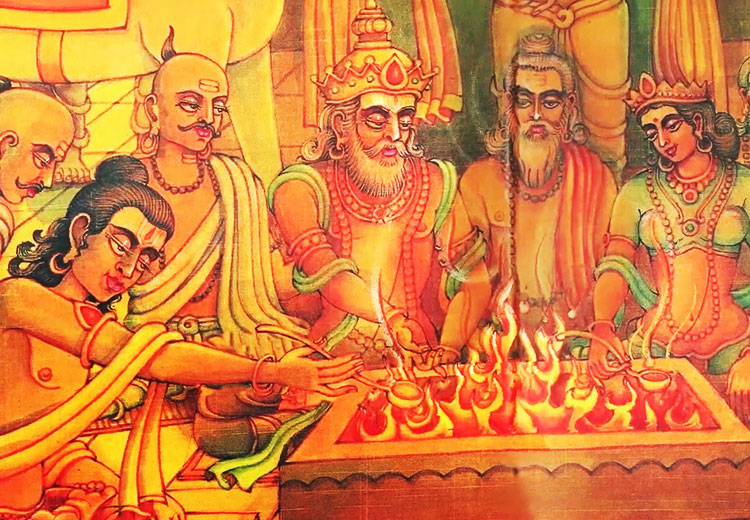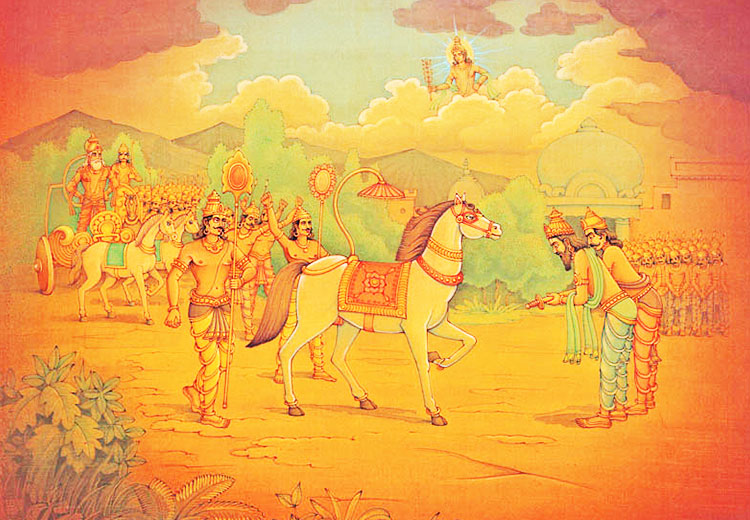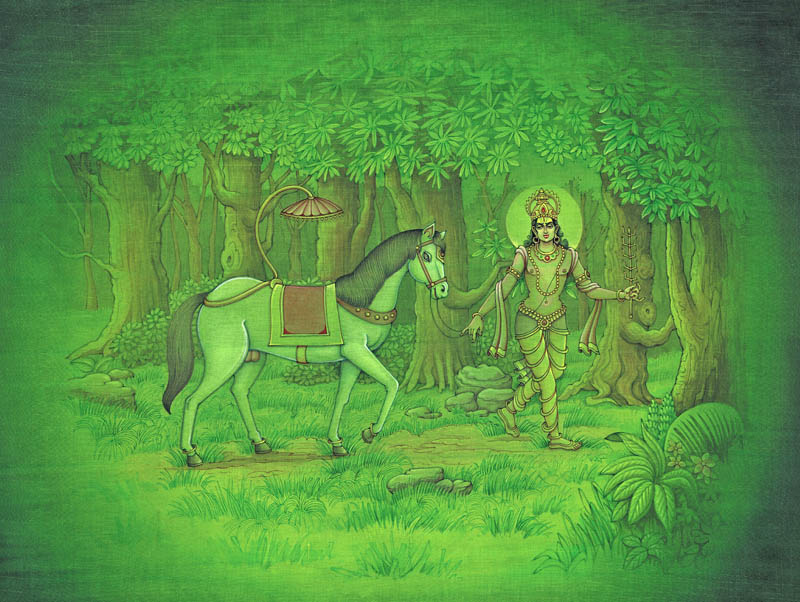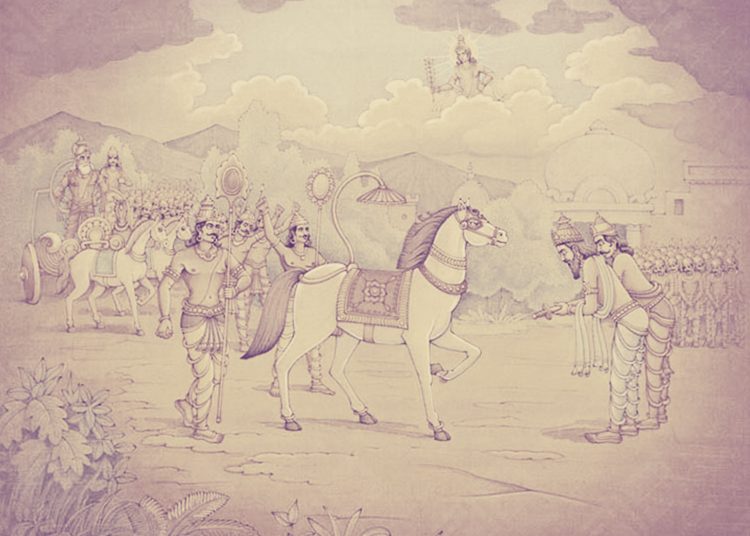
The moment when Ganga was needed, came King Sagar of the Solar Dynasty on Earth decided to perform an Ashwamedh Yagya (horse sacrifice) in order to become Emperor of the Earth.
The Ashwamedh Yagya is always performed by kings when they want sovereignty over neighbouring kingdoms. As part of this yagya.
A yagya is performed by priests and sages. At the end of the ceremony, a horse, well decorated with costly ornaments, is worshipped and let loose to go in any direction he chooses.
An army, complete with generals, is sent with the horse to see that the horse is able to move freely in his chosen direction.
When the horse enters into neighbouring kingdoms, the people in these kingdoms either have to accept the sovereignty of the king performing the Ashwamedh Yagya or they have to capture the horse and challenge the authority of the king expanding his dominion.

This naturally results in a war between the army guarding the horse and those in the kingdom who obstruct the path of the horse.
If the people choose not to fight then they must present gifts to the army that are then delivered to the conquering king as a sign of the new king.
King Sagar had sixty thousand and one sons and a very large army.
No king dared challenge his authority and his horse travelled unobstructed through all the neighbouring countries. King Sagar was well on his way to becoming the Chakravarti King (the Emperor of Earth).
Indra, The king of Heaven, saw the triumph of King Sagar over all the kings of Earth and got scared. He thought that if Sagar became the unchallenged king of Earth that he would also be entitled to the throne of Indra. Indra decided to obstruct Sagar’s Ashwamedh Yagya. Now unless the horse performing the Ashwamedh Yagya returns to its place of origin, the ritual is not considered complete.

So Indra stole Sagar’s horse and took it to the ashram of the great Sage Kapil, a far-off place near the Bay of Bengal that was below the earth’s surface and hidden from the view of humans at that time.
That Indra destroyed King Sagar’s dream to become the Chakravarti King, the Sovereign of the Earth.
Indra tied the horse to a tree behind the back of Sage Kapil. Sage Kapil was in Samadhi, the deepest state of meditation, and so did not see the mischief Indra was up to.
Sagar’s army was very disturbed when it could not see the horse, and it started searching in all directions.
The part of the army led by the sons of Sagar came to a large canyon, which they climbed down into to search for the horse but encountered instead a huge elephant.
This elephant is the animal that helps maintain the balance of the Earth, and it is known by the name Diggaj (dig or dik means direction; gaj means elephant). There are eight directions on the Earth—north, northeast, south, southeast and so on—and there are eight elephants, one in each of these directions, that keep the Earth in balance.
The chief of the army asked the elephant in the canyon about the missing horse and the elephant expressed his ignorance, but he suggested the army follow the canyon to the south, all the may to the end of the Earth. So the sons of Sagar and the army moved southward until they arrived at the ashram of Sage Kapil.







